Vessel Types Explained
Cargoes shall be divided into dry, liquid and specialised, with each of these divided further into sub categories. Dry cargoes include bulk, general and breakbulk, containers, reefer and Ro-Ro. Liquid cargoes are predominantly oil based but may also include chemicals and liquefied gasses. Specialised cargoes include passengers, livestock and heavy-lift/project.
Dry Cargo Ships:
Historically, dry cargo vessels were the mainstay of the world's merchant fleet. Known as general cargo vessels, they would be "geared", that is equipped with their own cargo loading equipment, usually in the form of derricks. The cargo would be stowed in different holds and the speed and effectiveness of the loading/unloading process would depend on the skill of the ship's crew and the port workers or "Stevedores". Such ships would sometimes operate a regular service between two or more ports as "liners", but could also operate in the "tramp trade" where vessels would go wherever they were required.
unloaded into hoppers and will then be transferred by conveyor to silos or open storage, smaller vessels may discharge directly into road vehicles.
General Cargo Vessels:
Although largely replace by bulk and container carriers, general cargo vessels still operate throughout the world. Cargo is usually in the form of pallets or bags and is known as breakbulk. There may be specialised handling facilities for such cargo, but usually loading and unloading is carried out using cranes and straps (for boxes) or slings (for bags). Loose or irregular cargo is also carried, in this case the vessel's crew and port stevedores will pack the cargo to minimise damage and maximise the utilisation of space.
Container Vessels:
For dry cargoes with a high weight to cost ratio such as coal, grain and ore, economies of scale have produced the moden bulk carrier. These usually large vessels are divided up into several separate holds covered by hatches. In port, cargo is loaded by conveyor and spouts or by crane and grab. Some bulk carriers are geared (usually a crane is located between each hatch) to allow the loading and unloading of cargo at berths without the need for shore equipment.
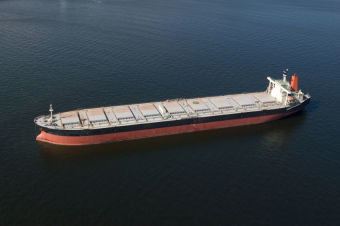
Containers have become the main way of transporting manufactured goods around the world. A container can be transferred between truck, train and ship relatively easily and is a standard size to simplify transportation. Containers can accommodate anything from foodstuffs to electrical equipment to automobiles. Containers are also used to transport bagged and palletised goods, liquids and refrigerated cargo.
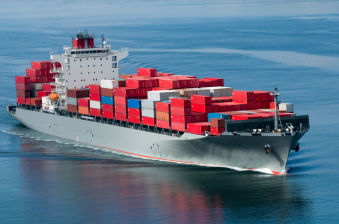
Bulk Carriers:
For unloading, cranes with grabs are the norm although specialised equipment may be used for certain cargoes. When vessels unload using cranes and grabs, personnel and vehicles will often be placed inside the holds to assist the process. Cargo will usually be
Standard containers are measured as TEUs (Twenty-foot Equivalent Units) and are generally 20 feet (1 TEU) or 40 feet (2 TEUs) long. All standard shipping containers are 8 feet wide and 8 feet 6 inches tall. There are also longer, taller and even shorter standard sizes, but these are less common.
Container ships are made up of several holds, each equipped with "cell guides" which allow the containers to slot into place. Once the first layers of containers have been loaded and the hatches closed, extra layers are loaded on top of the hatches. Each container is then lashed to the vessel but also to each other to provide integrity. Containers are usually loaded by specialised cranes or even general purpose cranes with container lifting attachments but some small container vessels are geared to allow self-loading/discharging.
Container vessels are used predominantly on liner routes and are some of the biggest vessels afloat. Ultra Large Container Vessels (ULCVs) such as the Emma Maersk (lead ship of the Maersk E-Class vessels) are able to carry approximately 15,000 TEU (depending on container weight). Large container vessels are restricted by their size to certain ports around the world and are also unable to transit certain areas due to draft or, in the case of canals beam, restrictions.
Reefer Vessels:
Ships designed to carry a refrigerated cargo usually comprising perishable goods such as fruit or meat are known as "Reefer Vessels". Cargo is stowed in holds which are then sealed and temperature controlled. Traditional reefer vessels have been largely replaced by the use of reefer containers which may be carried on board a container vessel. Reefer containers only need a power source to function although they are usually loaded to allow the crew to inspect them during the voyage.
Roll on-Roll off or Ro-Ro vessels come in many forms including vehicle ferries and cargo ships carrying truck trailers but the major type used for the transport of road vehicles is the car carrier. These slab-sided vessels feature multiple vehicle decks comprising parking lanes, linked by intenal ramps with access to the shore provided by one or more loading ramp. Cargo capacity of such vessels is measured in Car Equivalent Units (CEU) and the largest car carriers afloat today have a capacity of over 6,000 CEU.
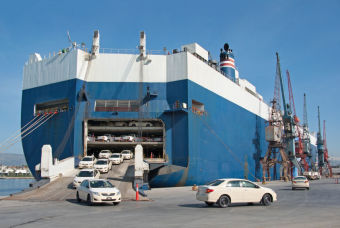
Ro-Ro Vessels:
Liquid Cargo Ships:
These vessels, collectively known as tankers, carry a range of liquid cargoes. Tankers were first developed in the mid nineteenth century when the use of iron allowed liquids to be carried in bulk economically and without leakage. Like the case of the bulk carrier, economies of scale have driven up the size of tankers and to day the largest examples have a carrying capacity or "deadweight" of over 400,000 tons.
Tankers are divided into separate tanks into which the cargo is pumped via a pipeline system. Moden tankers have large and segregated ballast tanks to allow them to sit lower in the water on the retun 'empty' jouney to improve stability. Many tankers also feature systems to add an inert gas to the tanks to reduce the risk of fire and explosion.
Crude Carriers:
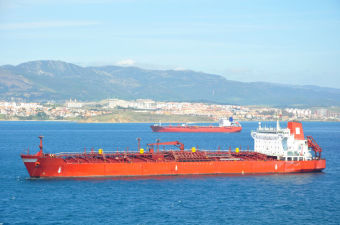
The largest ships afloat are the Very Large Crude Carriers (VLCCs) and the Ultra Large Crude Carriers (ULCCs). These ships are designed to load crude oil and transport it to refineries around the world where it can be processed into petroleum products. The largest crude carriers often load and unload at offshore buoys and terminals as they are too large to enter most ports.
Product Carriers:
These vessels, which are generally smaller than crude carriers, transport the refined products from larger terminals to smaller ports around the world. Products carried can include petroleum, jet fuel, diesel, asphalt, lubricating oil and tar. Smaller tankers are also used to transport non-petroleum bulk liquids such as molasses and palm oil.
Chemical Carriers:
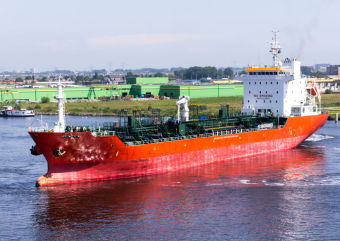
These ships usually have a deadweight of 5,000-40,000 tons and often have specialised cargo systems suited to the type of cargo carried. These systems can include heating or cooling apparatus and advanced cleaning systems to ensure the purity of a cargo is maintained when loaded into a tank that may have previously carried something different.
Lequefied Gas Carriers:
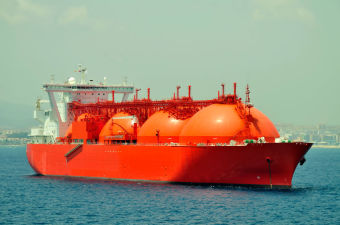
These ships began as converted oil tankers but have evolved into highly specialised purpose-built vessels. Designed to carry Liquefied Petroleum Gas (LPG) or Liquefied Natural Gas (LNG) under pressure, the cargo tanks are generally spherical for strength. LNG carriers are usually larger than those carrying LPG, the largest LNG carriers are the 'Q-Flex' vessels with a gas capacity of up to 266,000 cubic metres.
Specialized Cargoes
Most types of cargo could be considered as specialised due to the specific loading, unloading or stowage arrangements required. Many such cargoes are however, moved with such regularity and ease that the term 'specialised' takes on a new meaning. For the purpose of this article, it refers to cargoes that are either difficult to categorise as dry or liquid, or to cargoes that are relatively difficult to handle.
Passenger Vessels:
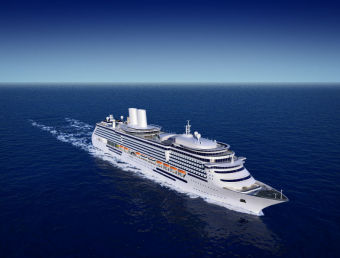
This category includes everything from 10 person foot ferries up to cruise ships able to carry over 6,000 passengers. Perhaps the most specialised cargo of all, the needs and desires of passengers have driven the design of the moden ferries and cruise vessels.
Ferries, once seen as 'a means to an end' for most, are now lavishly equipped with lounges, restaurants, shops and entertainment facilities – particularly when the ferry is on a relatively long route. The ships have got larger too, the Ulysees for example which runs between Holyhead and Dublin, is able to carry over 1,300 cars and 2,000 passengers.
The first example of ships undertaking a public 'cruise' can be traced back to the nineteenth century but cruising gained mass popularity in the latter twentieth century. Many cruise vessels were originally liners which were sent to warmer climates during seasonal bad weather on their regular routes. Arguably, the last of the liners is the Queen Mary 2, which still operates a regular transatlantic service.
Today, cruise passengers demand and expect a wide range of facilities including casinos, gymnasiums, shops, theatres, cinemas, pools, restaurants and bars. The largest cruise vessels can be up to 360 m. long and 60 m. wide. Popular cruising areas are the Mediterranean, Caribbean and Scandinavia.
